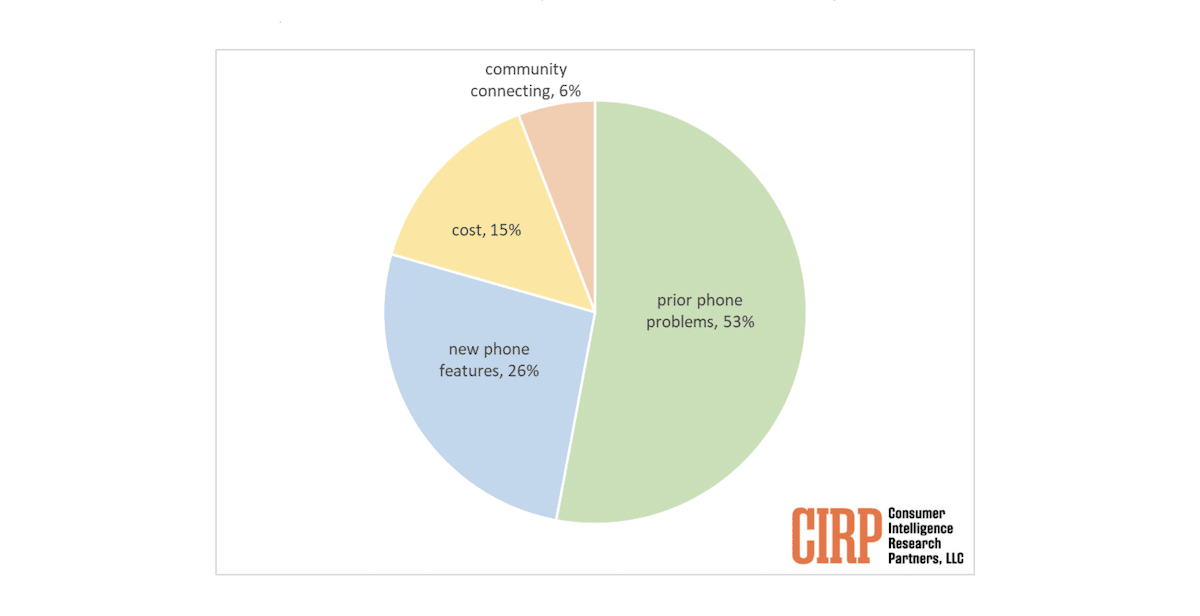Consumer Intelligence Research Partners (CIRP) latest survey of the US smartphone market reveals the top reasons for Android users switching to iPhones.
Contrary to Google’s narrative, Android users’ top reason for making the switch to iPhone is the problems with their previous Android smartphone.
![]()
Top four reasons for Android users to switch to iPhone in the United States
Earlier in May, CIRP reported that Android users coming to iPhone was at a 5-year high in the United States. Following up on that, its latest report shares Android users’ top four reasons for switching to iPhone.
- 53% of Android users switched because of problems with their aging Android smartphones like requiring repairs, and unsatisfactory user experience.
- 26% of Android users switched because of iPhone’s new features like a better camera, operating system, accessories, and others.
- 15% of Android users switched because of discounts on new iPhones. “They could spend less on a new iPhone than they expected or than on a comparable Android smartphone.”
- 6% of Android users switched because of “community connecting” features like iMessage and FaceTime.

It is also mentioned that some users could not pinpoint the exact reason for making the switch to iPhone, they simply “wanted something new.”
With only a fraction of Android users jumping ship because of iMessage, Google’s whole campaign to pressurize Apple into adopting RCS appears to be futile.
Google’s expensive campaign against iPhone’s iMessage might be for nothing
Rich Communication Services (RCS) is a modern standard to offer rich features to text message services like audio and video messages, ‘Read’ receipts, group chats, end-to-end encryption, and other available to iMessage, WhatsApp, and Facebook Messenger users.
Google adopted RCS for Android in 2016 and began pushing Apple to do the same but to no avail. Doubling down on its effort, Google recently launched a full-fledged #GetTheMessage campaign to shame the Cupertino tech giant for locking users in its ecosystem with iMessage and creating a disparity among Android and iPhone users with the green and blue chat bubbles discrepancy.
Google’s campaign against iMessage includes a dedicated website, advertisements, posts by celebrities on social media, billboards in New York City and Las Vegas, YouTube videos, and Twitter threads by its senior executives.
If Android users are predominately attracted to iPhones because of problems with their Android smartphones and their hardware and software capabilities that weakens Google’s argument that users are attracted to iPhones because of iMessage’s blue chat bubbles. It can also be considered as a predictive of Google’s failed campaign to push for RCS integration with iOS.